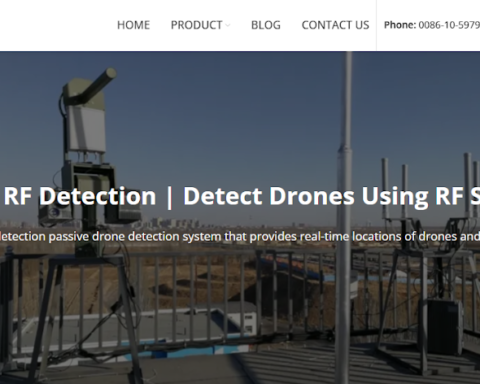Post Preview
Table of Contents
- Introduction to DoS and DDoS Attacks
- Critical Differences Between DoS and DDoS
- Common Vectors and Tactics
- Mitigation Strategies
- Preventative Actions
- Best Practices for Cybersecurity
- Conclusion
Key Takeaways
- Understanding the differences between DoS and DDoS attacks is crucial for maintaining cybersecurity.
- Implementing effective mitigation strategies can minimize the risk and impact of these attacks.
- Proactive measures and best practices are essential for safeguarding your digital assets.
Introduction to DoS and DDoS Attacks
In the ever-evolving landscape of cyber threats, DoS and DDoS attacks represent significant challenges for individuals and enterprises. These attacks can cripple online services and result in devastating financial and reputational losses that can take years to recover from. One must understand DDS compared with DDoS to better prepare and defend against them. With the increasing dependency on digital platforms, being well-versed in these attacks has never been more critical.
These attacks have risen significantly due to the increase in internet-connected devices, making them easier to access than in the past. This all-encompassing guide will assist you in grasping the complexities of DoS and DDoS attacks, highlighting the main distinctions, typical attack paths, practical instances, and strategies for effectively reducing their impact. Using this information assists in creating a solid defense against these common cyber threats.
Critical Differences Between DoS and DDoS
The first step in reducing the impact of DoS and DDoS attacks is grasping the essential distinctions between them. DoS attacks usually come from one point: overloading a server or network with many requests. If left unattended, these attacks have the potential to cripple a system altogether.
In contrast, DDoS attacks leverage multiple compromised systems, often called botnets, to launch a synchronized attack, making them significantly harder to defend against and mitigate. A single DDoS attack can involve thousands or even millions of devices working in unison to bring down a target. Recognizing these differences is essential for developing targeted and effective response strategies.
Common Vectors and Tactics
Cyber attackers use varied methods to execute DoS and DDoS attacks. Some common vectors include:
- HTTP Floods: Overloading a server with HTTP requests causes it to slow down or crash. These attacks often mimic legitimate user traffic, making them difficult to distinguish from regular activity.
- SYN Floods: Exploiting the TCP handshake process to consume server resources and make it unavailable to legitimate traffic. This type of attack can damage a network by exhausting its connection table.
- Amplification Attacks: Utilizing vulnerable protocols like DNS or NTP to send massive amounts of traffic to the target. These attacks multiply the traffic sent to the victim, making them highly potent with minimal initial effort.
Recognizing these tactics allows for more efficient detection and response, which is critical in minimizing the damage caused by these attacks. Knowing how these vectors operate also helps create more robust defenses against them.
Mitigation Strategies
Effective mitigation strategies are crucial in managing DoS and DDoS attacks. Some of the most impactful strategies include:
- Systems for detecting and preventing unauthorized access (IDS and IPS): These technologies help identify and block malicious traffic before it can harm. By continuously monitoring network traffic, IDS and IPS can detect abnormal patterns indicative of an attack.
- Rate Limiting: This method manages the flow of incoming requests to prevent overloading the server’s capacity. Rate limiting helps prevent servers from becoming overwhelmed by restricting user requests in a given period.
- Traffic Analysis: Ongoing attacks can be identified by constantly monitoring and analyzing network traffic for unusual patterns. This proactive strategy enables faster reactions and reduces potential harm.
When implemented effectively, these strategies can significantly reduce the impact of DoS and DDoS attacks, ensuring that services remain available even under duress.
Preventative Actions
Implementing preventive measures can significantly reduce the impact of potential attacks. Regularly updating software and hardware, applying patches, and conducting vulnerability assessments are essential. Ensuring that all systems are current with the latest security updates can eliminate any vulnerabilities that hackers could exploit.
Collaborating with a DDoS protection service can offer additional security through enhanced monitoring and response abilities. These services typically possess the necessary resources and knowledge to manage extensive attacks, providing reassurance and improved security.
Furthermore, a well-defined incident response plan guarantees that your company can promptly respond to a breach, reducing potential disruptions and harm. Consistently testing this strategy and ensuring all team members are clear on their responsibilities can significantly impact the outcome of an event.
Best Practices for Cybersecurity
Adopting best practices in cybersecurity is vital for defending against a wide range of threats. Some of the most effective practices include:
- Employee Training: Numerous attacks can be prevented by ensuring every staff member is informed about possible threats and knows how to react. Consistent training and staying updated on cybersecurity trends can strengthen defense measures.
- Strong Password Policies: Frequently updating passwords and using intricate combinations can prevent unauthorized entry. Introducing multi-factor authentication (MFA) increases security by making it harder for intruders to obtain access.
- Maintaining an Incident Response Plan: A pre-established plan ensures a prompt and efficient response to security incidents. Regularly practicing and going over this plan can greatly lessen the impact of a cyber-attack.
Promoting a cybersecurity awareness culture can enhance asset protection and reduce successful attack risks. In today’s digital era, it is crucial to take a proactive approach, as threats are constantly changing.
Conclusion
DoS and DDoS attacks are formidable threats in today’s digital environment. By understanding their differences, recognizing common vectors, and employing effective mitigation strategies, individuals and organizations can better defend against these disruptions. Proactive measures and adherence to cybersecurity best practices are essential for safeguarding digital infrastructures.
Devoting time and resources to comprehending and safeguarding against these attacks can result in substantial savings and protection of an organization’s image. Companies can use appropriate tools and tactics to maintain seamless operations despite cyber threats.
Stay in touch to get more news & updates on Essential Tribune.Com!








